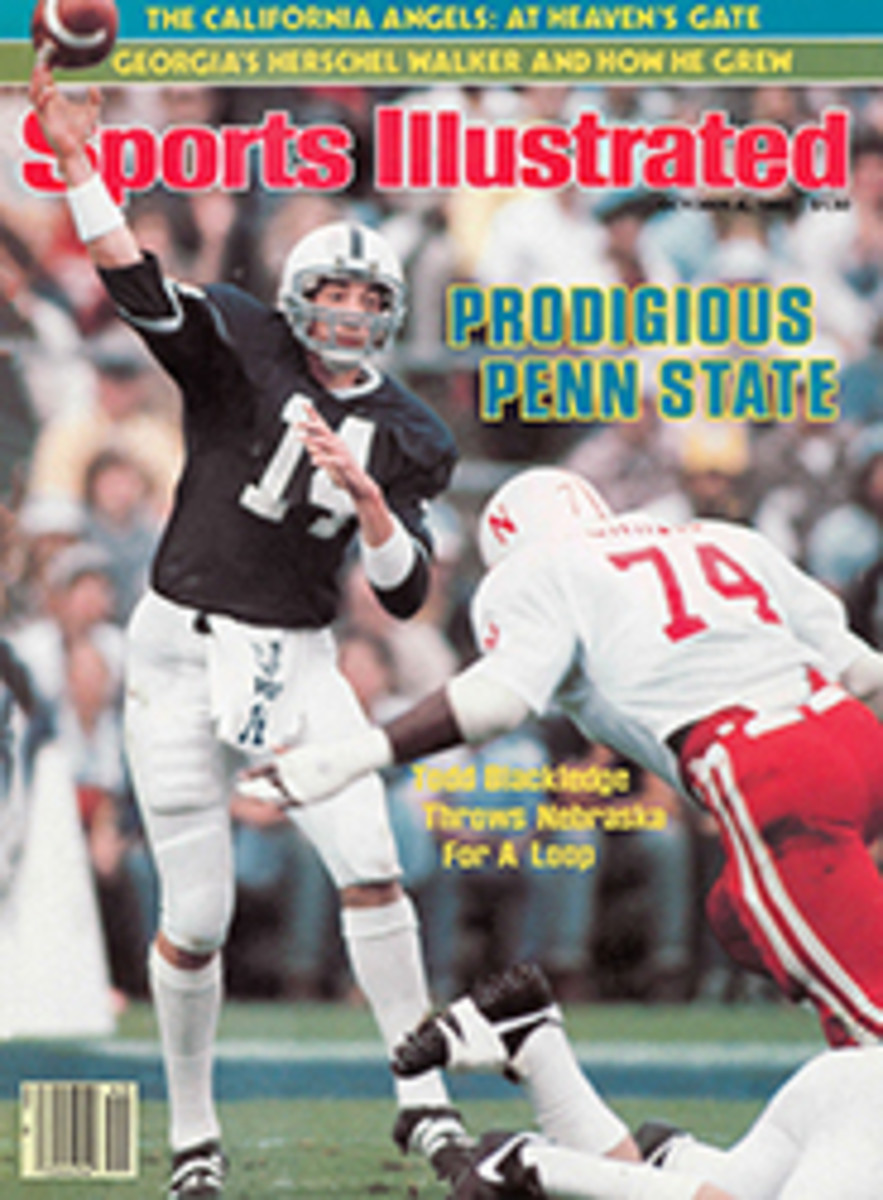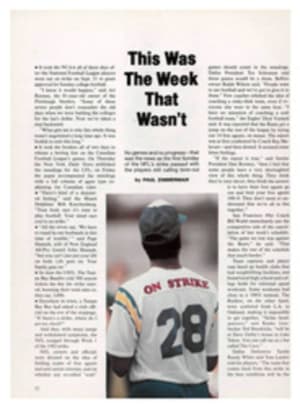
A BOY TOOK A SHOT IN THE DARK AND GOT THIS TIMELESS BASEBALL PHOTO
In July of 1940, my parents gave me a camera for my 15th birthday. It was a Kodak Brownie, one of those square, black box cameras with a fixed lens. It fascinated me and I quickly used up the single roll of film that came with it, firing indiscriminately at the family dog, a tree in the front yard and my father's new Ford. I then unloaded the film, took it to the drugstore for processing and waited. The pictures that came back were disappointing.
My father, a hardworking banker, thought I could use better subject matter. He spent many summer weekend afternoons at our home in Chevy Chase, Md. dozing in a chair on our back porch listening to Arch McDonald, the voice of the feckless Washington Senators, broadcasting road games, and he suggested I bring the camera along the next time we went to a Senators game. Thrilled by the idea, I returned to the drugstore with my savings in hand and purchased another roll of film, a snapshot album, a bottle of white ink and some new pen points with which to write captions under my photographs.
Last winter, some 40 years later, I was cleaning out a desk drawer that had been jammed shut. Therein I came upon that long-forgotten album, which was empty except for the 12 snapshots I took at that one ball game. The photos summoned up the summer of '40 and the sounds and scents of baseball as it was then. One picture showed the vast outfield of Griffith Stadium, with its high wall and manually operated scoreboard in right centerfield. In the next cracked but clear photograph was my father, smiling and resplendent in a summer straw. My father, the man who slept beside the old Crosley radio while McDonald droned on, the man I loved without qualification that summer before the war. How quickly it all came back.
Griffith Stadium was located on the edge of Washington's black ghetto, a jumble of narrow streets, bungalows and back alleys where baseball fans could park their cars for 10¢. Driving from our home some 10 miles out of town, we parked and then walked along a tree-shaded side street to Georgia Avenue, across the trolley tracks and down a long hill to the park.
Virtually everything but the infield dirt at Griffith Stadium was green. The only other touch of color in the place was provided by the pennants of the eight American League teams that flew atop the wall back of the leftfield bleachers. The scoreboard listed only the scores and batteries of these teams. There was no mention of the National League in Clark Griffith's park. Ever.
We entered the stadium and walked up a long ramp to the ground-level seats. We didn't buy tickets; my father got them through some mysterious alchemy "at the bank" where he worked. If we'd bought tickets, we would have paid 25¢ for the bleachers, 75¢ for reserved seats and $1.50 for the lower-level box seats. Scorecards were a dime, hot dogs the same. The stadium held about 30,000, but in the years after Washington won the pennant in 1933, attendance fell off steadily, because the Nats (as we also called the Senators) always finished sixth or seventh. The team could count itself lucky if the crowd exceeded 5,000, even on the days the hated Yankees came to town, led by the Yankee Clipper—the name Arch McDonald pinned on Joe DiMaggio.
Griffith Stadium had charm. If you were lucky enough to get a seat along the third-base line, as we were, you could talk with the coach or even the third baseman. And there wasn't any place at ground level from which you couldn't hear the chatter of the infielders or the encouragement of the catcher.
Those photographs of mine, with their deckle edges and white borders, captured that atmosphere. Looking at the album, I recalled searching for something to photograph. I couldn't get a good shot of Cecil Travis, my personal hero. He was too far away, playing shortstop. I couldn't get a shot of Dutch Leonard and his knuckleball delivery, because his back was to me. Finally I leaned over the top of the visitors' dugout and blindly aimed my Brownie down into the dimness. I had no idea who was sitting on the long bench below. The Philadelphia Athletics were in town, but they were even more lowly than the Nats. Nevertheless, they were major-leaguers, and their mentor and inspiration was the legendary Connie Mack.
When my roll of film was developed, the photo showed Mack, deep in conversation with another man in the dugout. Next to Mack was Charlie Berry, a former player who then coached for the A's, staring out at the field. There is something so old-fashioned and lonely about the scene. I remember thinking at the time it was a silly picture: an old man who had no business managing a baseball team and another old man, both in street clothes, both with scorecards in their hands, both with their attention miles away from the matter at hand. But looking at the picture from a distance of 40 years, I realize how closely it captured a time, an attitude, a way of life. It's the serenity of the scene that touches me now. It has the look of a Depression photograph or some minor league dugout in the Sally League.
Many of today's fans, accustomed to AstroTurf and air-conditioned domes, would find Griffith Stadium decrepit and inadequate. If they did, they'd miss the point. This old park, with its chipped green paint and its thick grassy outfield was baseball, just as Mack and Griffith were plantation owners whose workers were farm boys and mill hands and lovers of the game. Finding this snapshot, with all the memories locked behind its discolored surface, is to relive the past. And that's what baseball is all about.
PHOTO

